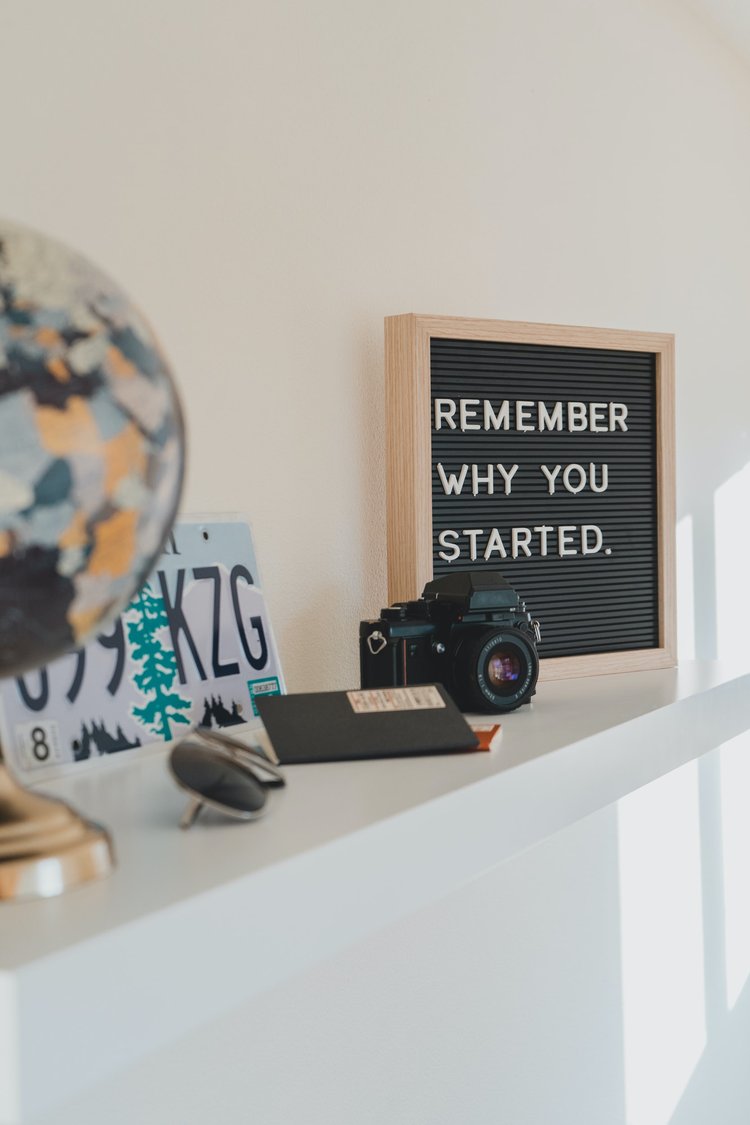Which comes first, motivation or action?
The energy needed to complete a task can be hard to find – particularly when it comes to the things that we should do, don’t want to do, or feel we can’t do. Usually, this happens because we don’t have enough external pressure (extrinsic motivation) or internal pressure (intrinsic motivation), So we wait, we procrastinate until the pressure builds and the mighty force that is motivation comes heavily upon us.
Finding motivation can help build a healthy work-life balance by boosting our work productivity and performance so that we have more psychological headspace outside of work to apply to the other parts of our life that give us meaning or satisfaction. Work-Life balance has a positive impact on not only our productivity and performance but also our psychological wellbeing, resilience, and overall life satisfaction too; but it can be hard to make those choices when we don’t feel we have the motivation.
What would change for you if you viewed motivation as the result of action rather than the instigator of action?.
The truth about motivation is that it is all in our head. It’s a conversation between the part of us that wants to grow and the part that wants to avoid discomfort and effort. I know that running in the morning starts my day off in a positive state of mind. I know I enjoy the quiet, the sunrises, the early morning birds, and listening to a podcast or a book. Yet as soon as I wake up, those benefits feel outweighed by the warmth of the bed.
Eventually, I’ll get myself up and commit to a short run. Then after a mile or so, the energy arrives and I feel the motivation to maybe go a little further or faster. Action leads to motivation. One positive step can lead to many more. If I run, I tend to choose a healthier breakfast. If I stay up late and get take-out I’m much less likely to run the next day and much more likely to choose the quick and easy breakfast. Action promotes action and lethargy promotes lethargy.
We experience these dialogues throughout the day. Every time our brain highlights a potential step forward, the desire for the easy route joins the conversation – and is very convincing. Where are you hearing the voice of procrastination at the moment? It can be starting a job search, having a difficult conversation, picking up your paintbrushes, or putting on your running shoes.
Making that first step can be hard. Especially, if your mood has been low or pressure is high, it can feel like you have gotten smaller and all the steps have gotten bigger. Three factors that can affect our ability to get moving are our brain, our reason, and the size of the task.
But first…
It is important to highlight that inaction isn’t always the wrong choice. If your body is screaming for rest, choosing rest is appropriate. Relaxation is an essential part of wellbeing. In coaching and therapy, I’ve met many people who are constantly on the go and struggle to switch off until burnout arrives. Give yourself permission to rest, schedule it into your days. The body and the brain need it.
The Brain
The brain, at times, is quite simple. It wants to avoid pain or discomfort and experience pleasure. In doing so, it prioritizes instant gratification over long-term rewards. In principle, this means that your brain has a strong drive to choose Netflix over running or another hobby. This is because Netflix offers a small hit of the happy chemicals with very little to no effort, versus the larger effort (but larger reward) of running or being creative. The comfort drive is even more powerful when we are stressed, burned out, or tired.
The 20-minute rule is a handy trick for this. Schedule 50 minutes for a task, where you work uninterrupted. That means removing distractions like your phone or open tabs on your browser and going for it. After 20 minutes you should be building towards a flow state and the rest of the task will come easily, and you can take a 10-minute break after the 50 minutes if you like. The hope is that once you start, motivation follows.

What is the goal?
As the brain looks for instant gratification, we can often lose focus on why we are setting our goals. In reviewing the task you have been working towards – why is this a goal? If you were to achieve it, what would the benefit or outcome be? It seems very basic, but intention can help to keep you on track.
For me, I have to use prompts. For example, if my goal is to eat healthier, I need to watch out for my usual habit of reaching for sugar during an afternoon slump. Sugar highs or caffeine highs tend to lead to tiredness later on. But still I walk into the shop for lunch, or open the fridge and see the juice or delicious white bread. I forget my goal and then hit my slump. A simple prompt for me is to put a sticker on my phone. This interrupts my brain’s automatic decision-making and gives me a moment of choice. It reminds me as I go to pay for food – maybe I don’t really need that donut.

What is the goal?
As the brain looks for instant gratification, we can often lose focus on why we are setting our goals. In reviewing the task you have been working towards – why is this a goal? If you were to achieve it, what would the benefit or outcome be? It seems very basic, but intention can help to keep you on track.
For me, I have to use prompts. For example, if my goal is to eat healthier, I need to watch out for my usual habit of reaching for sugar during an afternoon slump. Sugar highs or caffeine highs tend to lead to tiredness later on. But still I walk into the shop for lunch, or open the fridge and see the juice or delicious white bread. I forget my goal and then hit my slump. A simple prompt for me is to put a sticker on my phone. This interrupts my brain’s automatic decision-making and gives me a moment of choice. It reminds me as I go to pay for food – maybe I don’t really need that donut.

The Size of the Task
Finally, one of the biggest obstacles is the size of the task. It can leave us not knowing where to start and overwhelmed by the task ahead, and it can stop us from recognizing the progress along the way. You look at how much work there’s left to do rather than how far you’ve gotten.
It is important to break down the task or goal into manageable steps. Make a plan, estimate how long it will take, and then ask yourself if it’s realistic. Break the project or goal into small simple steps first and then start it.
Keep track of the progress you’ve made and even in times of failure ask yourself what have you learned about how your brain tries to distract or trap you. Make a plan and start again.
Going through these steps and acknowledging any potential psychological barriers can help us approach our challenges head-on. This is how the brain boosts resilience, recognizing the desire to withdraw and still stepping forward.
If you are stuck; either with career progression, work-life balance, habits, or even hobbies it can be helpful to map this out with someone. If you would like help, coaching can be a really powerful tool in moving you forward. Feel free to email me with any questions on how coaching can help and I’d be delighted to point you in the right direction.


